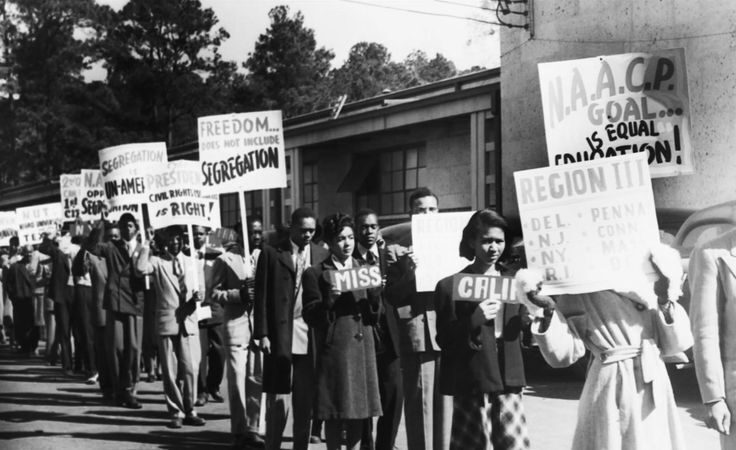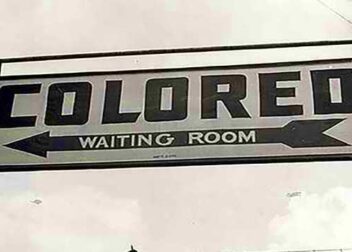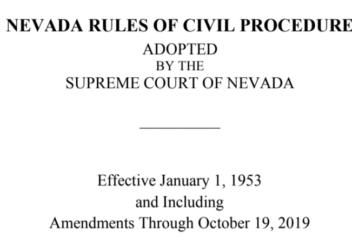Exploring the Historical Context of Jim Crow Laws
The Jim Crow laws mark a period in American history characterized by racism ingrained in societal structures. Originating from a character in a minstrel show these laws aimed to uphold racial segregation and discrimination especially in the Southern states. Their impact was far reaching touching upon every facet of life for African Americans. Recognizing the significance of these laws goes beyond their text; it involves grasping the historical context surrounding their emergence and the profound influence they had on the lives of countless individuals.
Origins and Early Development
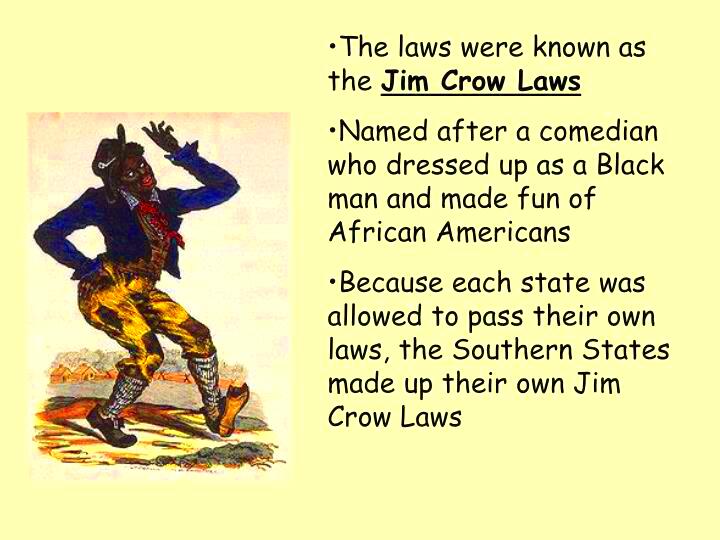
The Supreme Court case Plessy v. Ferguson in 1896 had a significant impact on supporting segregationist policies in the late 19th century. The court determined that racial segregation was permissible, as long as the facilities were considered “equal.” This ruling effectively endorsed the widespread discrimination that ensued. It provided justification for the increasing implementation of Jim Crow laws and played a role in entrenching them, within Southern society.
Key Legislation and Policies
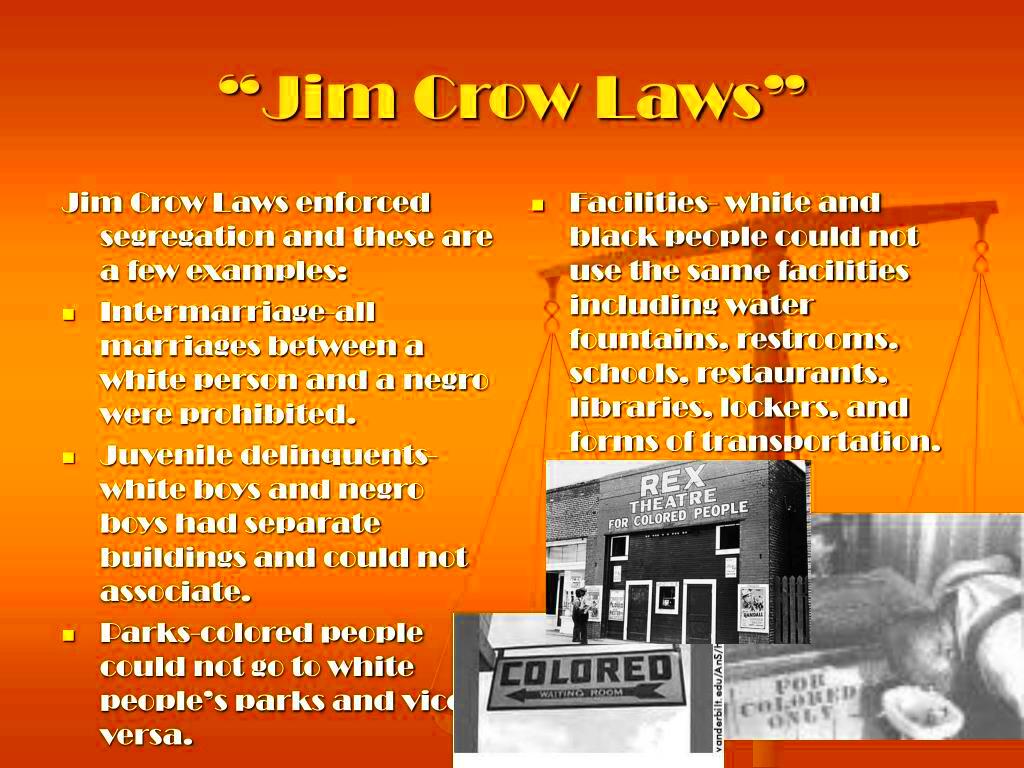
The Jim Crow laws weren’t just one law but rather a set of rules and practices that differed from state to state while aiming to achieve similar objectives. Here are some points to note.
- Segregation Laws: These laws mandated the separation of races in public spaces such as schools, transportation, and restaurants. For instance, separate water fountains and restrooms for whites and blacks became commonplace.
- Voting Restrictions: African Americans faced numerous barriers to voting, including literacy tests, poll taxes, and other discriminatory practices. These measures effectively disenfranchised a large portion of the Black population.
- Educational Inequality: Public schools were segregated, and those for Black children were often underfunded and inadequately equipped compared to those for white children. This disparity in educational resources further entrenched racial inequalities.
The combined impact of these laws was to establish a structured system of racial superiority and to strip African Americans of essential civil liberties. The core of society was reshaped with racial divisions marked in ways that would have enduring effects. Contemplating these policies serves as a reminder of the difficult challenges encountered by numerous individuals and the persistent fight for genuine equality.
Impact on African American Communities
The Jim Crow laws deeply affected African American communities changing their daily lives and limiting their chances. Picture growing up in a society where your rights are restricted solely based on the color of your skin. This was the harsh truth for numerous African Americans during the Jim Crow era.
The economic consequences were just as harsh. Biased behaviors restricted job prospects and equitable pay for Black individuals. A lot found themselves stuck in low paying, routine positions and ingrained racism impeded their financial advancement.
The impact on society was equally harmful. The continuous reinforcement of racial segregation and superiority bred a feeling of helplessness and dehumanization. Black families endured humiliation and encountered obstacles that hindered their progress and even their ability to uphold basic dignity.
Seeing these challenges firsthand allows us to grasp the unwavering spirit of a community that has persistently stood up for its rights and dignity in the face of systemic oppression. The tales of determination and resilience in the midst of hardships serve as a poignant reminder of the profound bravery needed to confront deeply rooted systems of injustice.
Resistance and Civil Rights Movement
The fight against Jim Crow laws ignited a movement that brought about change the Civil Rights Movement. During this time in American history people showed immense courage and unwavering dedication in their efforts to break down the unjust structures of segregation and inequality.
Resistance manifested in various ways, including court fights and community mobilization. A significant event was the Montgomery Bus Boycott sparked by Rosa Parks’ refusal to relinquish her seat. Her act of defiance resulted in a boycott of the city’s buses for a year showcasing the impact of unity.
The fight against injustice brought together both community leaders and ordinary individuals who showcased the diverse ways in which resistance can manifest. It was an era marked by transformation where bravery and solidarity played a crucial role in challenging and ultimately dismantling the Jim Crow laws. This chapter in history serves as a reminder of the strength found in togetherness and the significance of advocating for fairness, even when faced with seemingly insurmountable challenges.
End of Jim Crow Laws and Legacy
The conclusion of the Jim Crow period was marked by a progression of notable shifts in both laws and societal norms. Key milestones in this transformation included the Civil Rights Act of 1964 and the Voting Rights Act of 1965 which were pivotal laws that broke down the legal structure upholding racial segregation and voter suppression.
These legislations represented a shift, banning unfair treatment in places like hotels, workplaces and schools. They also sought to remove obstacles that had been employed to deny African Americans the right to vote. The approval of these laws stood as a tribute to the unwavering dedication of individuals who championed fairness and righteousness.
Although there were wins in court the impact of Jim Crow laws lingered on. The fight for genuine equality carried on as fresh types of discrimination surfaced. Deep rooted societal beliefs, economic inequalities and disparities in education remained showing that the abolition of segregation was just a step, in the long road to achieving racial fairness.
As we look back on the Jim Crow era today we are reminded of how far weve come and how much further we still have to go. Its a poignant reminder of the strength of those who endured and stood up against ingrained racism. Their legacy urges us to keep striving for a fairer and more just society honoring their sacrifices in the ongoing pursuit of freedom and respect.
Lessons Learned from the Era
The time of Jim Crow teaches us important lessons about how oppression works and how strong the human spirit can be. Looking back at this era brings to light the harsh truths of racism ingrained in society and the strength of unity in standing up against it. What truly resonates with me is the resilience of individuals who despite facing treatment managed to seek their dignity and assert their rights.
A key takeaway from this time period is the significance of staying alert and speaking up. The Jim Crow laws were more than just regulations; they reflected deeply rooted views in society. These views didn’t vanish along with the laws but required ongoing commitment to question and transform. The civil rights advocates who stood up against these wrongs show us that making progress demands unwavering dedication and bravery.
An important takeaway is the significance of standing together and fostering a sense of community. The Civil Rights Movement drew its strength from the collective effort of people from diverse backgrounds joining forces for a shared purpose. Their capacity to rally and uplift one another during challenging times underscores the power that can be unleashed when individuals unite.
In conclusion this period highlights the importance of tackling not legal inequalities but also social and economic gaps. Although laws such as the Civil Rights Act marked progress it became evident that achieving true equality goes beyond enacting laws; it necessitates continuous societal transformation and fairness.
The teachings continue to hold significance as we address present day challenges related to fairness and justice. They serve as a reminder that the struggle for equality is a continuous process and that each generation contributes to building a more just community.
Current Relevance and Reflections
In examining our society today we can still see remnants of the Jim Crow era in different ways. The ideals of fairness and equality that arose from the fight against Jim Crow continue to shape modern conversations about race and civil liberties. Although the blatant segregation of that time is no longer legally upheld there are still persistent systemic problems that mirror the lasting effects of those days.
Think about the discussions happening around racial profiling, unequal wealth distribution and unfairness in education. Even though these problems aren’t directly linked to Jim Crow laws they share common origins in systemic racism and inequality. The impact of Jim Crow serves as a powerful reminder of how ingrained these biases can be and how they can evolve into different types of discrimination.
Taking a moment to look back on this time prompts us to evaluate our advancements and acknowledge the areas where improvement is still needed. It serves as a reminder of the ongoing challenges encountered by marginalized groups and urges us to stay dedicated to tackling the visible and hidden obstacles that stand in the way of genuine equality.
In addition grasping history allows us to truly value the progress we’ve achieved and strengthen our dedication to fairness. Its about paying tribute to those who stood up for their rights and making sure that their sacrifices bring about significant and enduring transformation in our community.
Frequently Asked Questions
What were the main goals of Jim Crow laws?
The main objective of Jim Crow laws was to uphold racial segregation and reinforce white dominance. These regulations sought to segregate African Americans from white individuals in public areas and to restrict their access to equal rights and opportunities.
How did Jim Crow laws affect education?
The Jim Crow era saw the enforcement of laws that dictated the segregation of schools based on race. White and Black children were required to attend institutions with the latter frequently being allocated noticeably fewer resources. This resulted in a significant gap in the standard of education, which had lasting economic and social impacts on African American communities.
What role did the Civil Rights Movement play in ending Jim Crow laws?
The Civil Rights Movement was instrumental in putting an end to Jim Crow laws through protests, legal battles and advocacy initiatives. Key laws like the Civil Rights Act of 1964 and the Voting Rights Act of 1965 were pivotal in breaking down the system of segregation and discrimination.
Are there any lasting effects of Jim Crow laws today?
Absolutely the impact of Jim Crow laws lingers on in different ways such as persistent racial inequalities in education, job opportunities and the justice system. Although segregation is no longer enforced the social and economic consequences of these laws still have an effect on African American communities.
How can we continue to address the issues stemming from the Jim Crow era?
To keep dealing with these challenges it’s crucial to actively strive for racial equality back policies that advance social and economic fairness and participate in honest conversations about race and discrimination. Building upon the progress achieved so far and addressing both systemic and personal instances of racism are vital steps in this journey.
Conclusion
Looking back on the Jim Crow era is a mix of emotions. It serves as a reminder of the challenges endured by those who stood up against racial discrimination and the significant progress they made. The history of Jim Crow laws showcases the resilience of the human spirit and the unwavering pursuit of respect and fairness. Reflecting on this time in history reveals that the insights gained still shape our path, towards a more equitable and inclusive society. By embracing these teachings we are urged to pay tribute to the past by actively striving for a future where equality and justice are not mere concepts but tangible realities for everyone.
